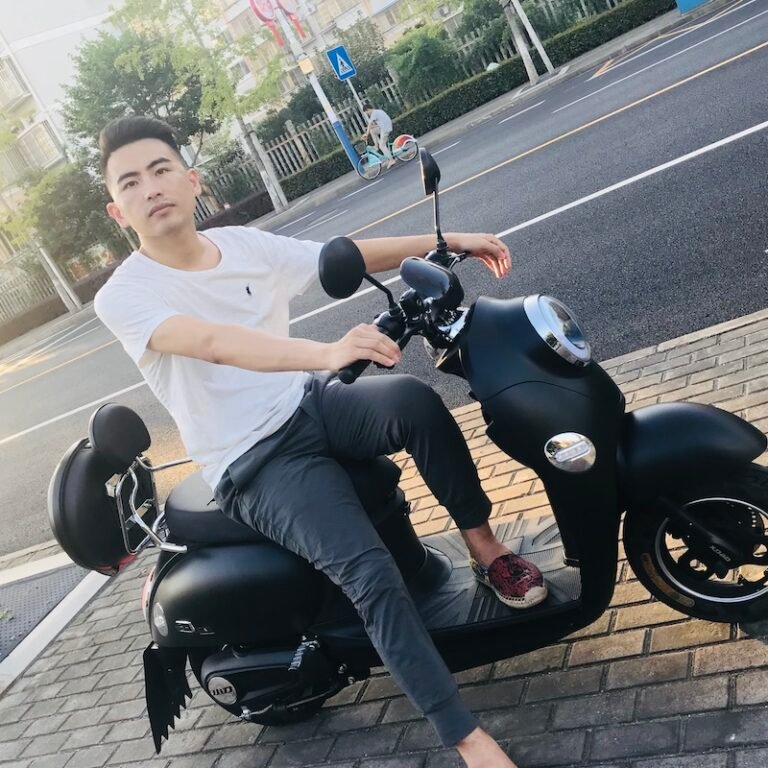Quick Answer: To produce high-performance, custom rough carbon fiber1 pickleball paddles, manufacturers must leverage advanced production techniques like hot pressing2, cold pressing3, and thermoforming4—each offering distinct benefits in terms of strength, ball control, and durability. At NEX Pickleball, our OEM/ODM services5 blend these expert processes with thorough quality control, ensuring that our paddles meet rigorous performance standards while serving as a reliable solution for your product line expansion.
For sports equipment companies looking to upgrade or expand their product lines, sourcing a reliable manufacturing partner for custom rough carbon fiber pickleball paddles is a critical decision. The challenge lies in balancing multiple factors:
- Material Quality: Achieving an optimal combination of strength, stiffness, and weight.
- Production Techniques: Understanding how advanced processes like hot pressing, cold pressing, and thermoforming influence the paddle’s performance and durability.
- Customization Flexibility: The ability to tailor the product for specific player preferences, game pace, and market requirements.
- Cost & Efficiency: Meeting production deadlines with a high-quality product while maintaining competitive pricing.
Manufacturing paddles that not only deliver on performance but also differentiate products in a crowded market demands extensive expertise, detailed technical insights, and a commitment to innovation.
Several factors can impact the production of high-performance rough carbon fiber paddles:
-
Material Properties: The inherent qualities of carbon fiber—whether 3K, 12K, or T300—play a pivotal role. To achieve the desired rough texture and performance, manufacturers must choose materials that offer both durability and the energy return needed by intermediate to advanced players.
-
Manufacturing Process: Each production method brings unique pros and cons:
- Hot Pressing ensures strength and impact resistance but may modify the material's feel.
- Cold Pressing maintains the inherent properties, offering precise control over structural thickness.
- Thermoforming allows for intricate designs and uniform material distribution but often requires longer production cycles.
-
Customization Demands: OEMs need the flexibility to adjust factors such as grip design, weight distribution, and surface texture. In a competitive market, these customizations can define a brand’s identity, making the selection of an adept manufacturing partner paramount.
-
Quality Control: Any variation in the production process can lead to inconsistencies. Rigorous testing and adherence to quality standards are essential to ensure every paddle meets the predefined performance criteria.
Understanding these underlying factors is the first step in aligning production methods with strategic business goals, particularly when positioning your brand as a leader in high-performance sports equipment.
To address these challenges, we at NEX Pickleball utilize three primary techniques in paddle manufacturing. Below is a detailed comparison of these processes through a structured table:
| Production Method | Advantages | Disadvantages | Best For |
|---|---|---|---|
| Hot Pressing | High production efficiency, strong impact resistance, structural integrity | Potential alteration in material feel, requires high equipment investment | High-performance paddles needing strength |
| Cold Pressing | Precise thickness control, maintains material properties, improved ball responsiveness | Longer production cycles, needs high-quality precision equipment | Custom designs with emphasis on control and comfort |
| Thermoforming | Intricate design capability, uniform material distribution, enhanced stability | Extended production time, higher equipment costs | Premium or custom-made paddles with complex structures |
At NEX Pickleball, an in-depth understanding of these processes allows us to recommend the best production method for your needs, particularly when targeting the niche market of rough-surfaced carbon fiber paddles. We emphasize each strategy according to the desired paddle characteristics, ensuring that our manufacturing partners receive a product that balances precision with performance.
The hot pressing technique involves heating materials to a specific temperature before applying controlled pressure to shape the paddle. This method is best suited for producing paddles that require exceptional strength and resilience. Key points include:
- Impact Resistance: The high pressure and heat work together to enhance the material’s strength, making it ideal for competitive play.
- Structural Integrity: By ensuring close bonding between layers, hot pressing minimizes the risk of delamination, a critical factor for durability under extreme conditions.
- Production Speed: This method is highly efficient, allowing for large-scale production, which is essential for B2B clients looking for consistent, high-volume orders.
However, the elevated temperatures can sometimes alter the natural properties of the material, affecting the paddle’s tactile feedback. This is a consideration for players who value a particular feel during gameplay.
Cold pressing is a technique where materials are shaped and solidified at room temperature under high mechanical pressure. This process excels in maintaining the intrinsic quality of raw carbon fiber:
- Precision: It enables fine control over the paddle dimensions and thickness, ensuring consistent product quality.
- Enhanced Feedback: Retaining the natural properties of the carbon fiber means players enjoy better ball feel and responsiveness.
- Customization: Ideal for bespoke manufacturing where each paddle is tailored to specific design requirements.
The primary limitation is the longer production cycle, which may impact the overall manufacturing timeliness but is often justified by the superior control and customization it provides.
Thermoforming involves heating materials until they become pliable, then shaping them within molds. The benefits include:
- Complex Designs: This process allows for the production of paddles with intricate surfaces and non-standard shapes, which contributes to the “rough” texture desired in many modern designs.
- Uniform Material Distribution: Even under varying temperatures, the material spreads consistently, ensuring the paddle maintains a balanced structure and high performance.
- Enhanced Stability: Properly executed thermoforming provides excellent long-term stability, with improved resistance to warping or other deformations.
Thermoforming is best for premium paddles where the design details and performance criteria outweigh the longer cycle time and higher costs.
Consider a scenario where a sports equipment company aims to launch a new line of rough carbon fiber pickleball paddles with an emphasis on performance and durability. The sourcing manager is presented with multiple OEM options but is particularly focused on the manufacturing process and material resilience.
-
Initial Evaluation & Material Selection:
- Begin by assessing the types of carbon fiber available. NEX Pickleball offers 3K, 12K, and T300 fibers—each with unique benefits related to strength and flexibility.
- Decision Point: For a paddle aimed at advanced play, the T300 carbon fiber might be chosen for its excellent tensile strength and balanced performance.
-
Choosing the Production Technique:
- Hot Pressing is considered if rapid production efficiency and impact resistance are prioritized.
- Cold Pressing becomes the selection when the priority is precise control over paddle thickness and natural ball feedback.
- Thermoforming may be preferred for paddles requiring customized, intricate surface textures.
- Decision Point: In this case, if the client prioritizes achieving a rough texture without compromising performance, a combination of thermoforming (for design specificity) and cold pressing (for maintaining material properties) may be ideal.
-
Quality Control & Consistency:
- Every paddle undergoes rigorous testing for weight distribution, vibration control, and ergonomic grip assessment.
- Consistent quality checks ensure the final product meets the specifications for both recreational and competitive usage.
The client receives paddles that not only match their customized design requirements but also provide the durability and high-performance characteristics essential for competitive pickleball. By choosing NEX Pickleball, the sports equipment supplier gains access to:
- Advanced Material Expertise: Leveraging our knowledge in carbon fiber and composite materials.
- Customized Production Processes: Tailored to meet client-specific design and performance needs.
- Reliability and Efficiency: Ensuring timely production and delivery with high-quality control standards.
This scenario underlines the importance of selecting a manufacturing partner who comprehensively understands the technical intricacies, ensuring that every paddle meets the highest standards.
When evaluating potential manufacturing partners, here are some pivotal factors to consider:
-
Production Process Expertise:
Ensure your partner has a transparent process overview. Understanding whether they utilize hot pressing, cold pressing, or thermoforming—and why—is essential for aligning with your product objectives. -
Material Quality & Options:
The ability to choose from multiple high-performance materials such as 3K, 12K, or T300 carbon fibers offers a significant competitive advantage. This flexibility allows you to meet various market niches, from recreational to competitive play. -
Customization Capabilities:
Look for partners who offer diverse options for paddle customization. Factors include grip design, paddle weight, and surface texture. Customization is key to establishing a unique brand presence and competitive differentiation. -
Quality Control Mechanisms:
The manufacturing partner must adhere to strict quality control procedures. Regular testing, rigorous inspection at every production stage, and certification of material properties are critical to ensuring product consistency and reliability. -
Production Efficiency:
Evaluate the production timelines versus quality. Some techniques offer faster production at the potential cost of slight variations in tactile feedback, while others might slow down production but deliver superior product consistency. -
After-Sales Support and Flexibility:
In the dynamic sports equipment market, the ability to adapt production based on market feedback or to provide on-demand customization can significantly influence your product’s success. A reliable partner should be open to collaboration, adjustments, and even post-production services like on-demand printing.
By weighing these factors, procurement managers and product development directors can make informed decisions that align with their company goals, thereby strengthening their product portfolios and ensuring market success.
In summary, producing cutting-edge rough carbon fiber pickleball paddles demands a deep understanding of advanced production techniques, material properties, and effective quality control methods. NEX Pickleball stands out as a trusted OEM/ODM partner by offering:
- A wide array of premium materials (3K, 12K, T300 carbon fibers, fiberglass, composites)
- Expertise in multiple production processes tailored to meet distinct performance requirements
- Customization options that align with evolving market demands and player preferences
For sports equipment companies ready to expand or enhance their pickleball product lines, collaborating with a manufacturer that understands both the technical details and business challenges is imperative. We invite you to explore our comprehensive OEM/ODM solutions and see firsthand how we balance innovation and quality to deliver paddles built for performance.
Take the next step—contact us to discuss how NEX Pickleball can fulfill your custom manufacturing needs and propel your product line to a new level of excellence.
-
Are carbon fibre pickleball paddles good?
Yes, carbon fiber pickleball paddles are highly favored for their stiffness, lightweight design, and excellent power responsiveness. They are particularly well-suited for intermediate to advanced players who require a paddle that offers both speed and precision during competitive play. -
Which is better Kevlar or carbon Fibre pickleball paddle?
The choice between Kevlar and carbon fiber depends on your playing style and performance priorities. Kevlar paddles emphasize power and are designed for players who hit with force, while carbon fiber paddles offer a balanced mix of speed, control, and feedback, making them ideal for those seeking quick responsiveness and finesse. -
How long does a raw carbon fiber pickleball paddle last?
The longevity of a raw carbon fiber paddle is largely determined by the durability of its rough surface. With proper care and if the gritty finish is maintained, a raw carbon fiber pickleball paddle can last at least six months or longer for an average player, though the lifespan will vary based on usage intensity and maintenance.
-
carbon fiber: Reading this article can provide insights into the composition, properties, and benefits of carbon fiber and how it enhances performance in sports equipment manufacturing. ↩ ↩
-
hot pressing: Learn how the hot pressing process uses heat and pressure to improve material strength and impact resistance for high-performance products. ↩ ↩
-
cold pressing: Discover the benefits of cold pressing in maintaining the natural properties of materials and providing precise manufacturing control. ↩ ↩
-
thermoforming: Explore thermoforming and its role in achieving complex designs and uniform material distribution essential for premium products. ↩ ↩
-
OEM/ODM services: Understand the significance of OEM (Original Equipment Manufacturing) and ODM (Original Design Manufacturing) services in providing tailored, high-quality manufacturing solutions. ↩ ↩







